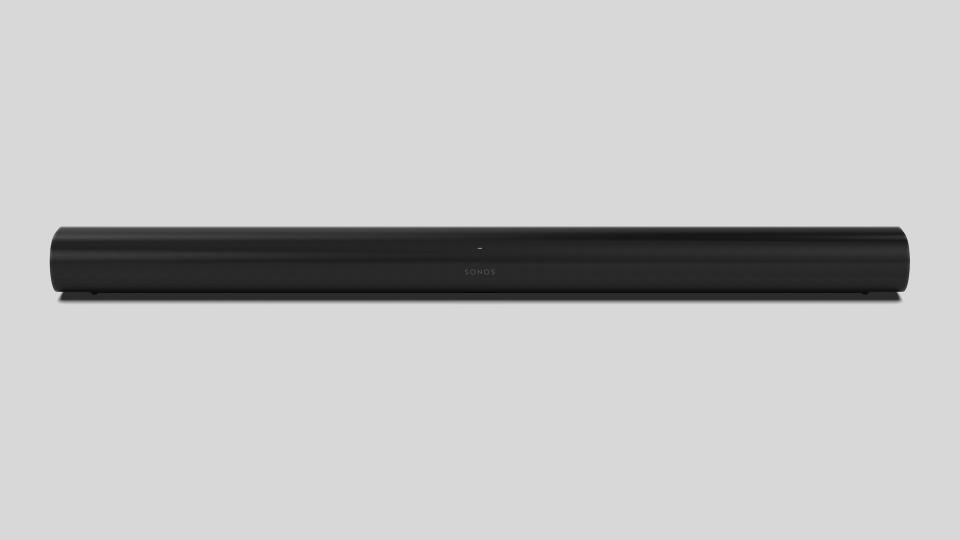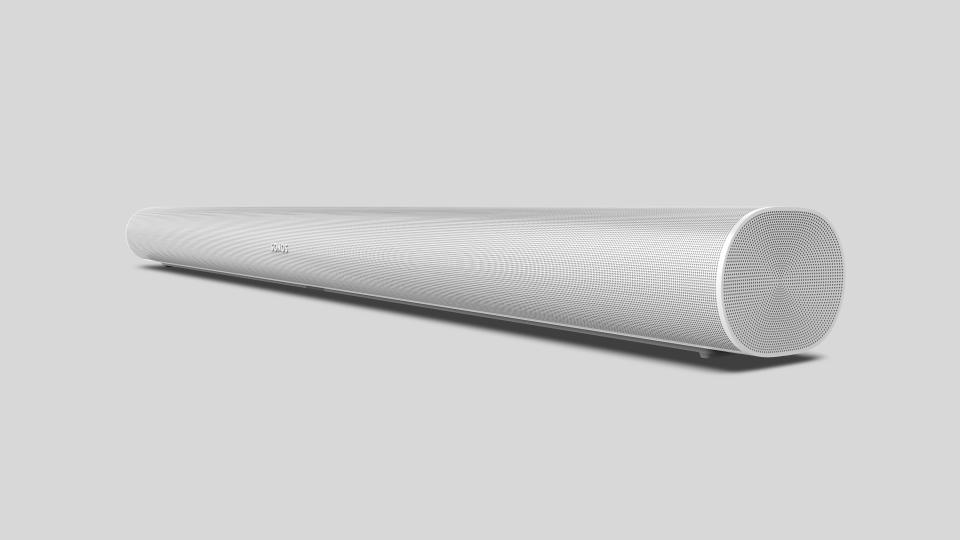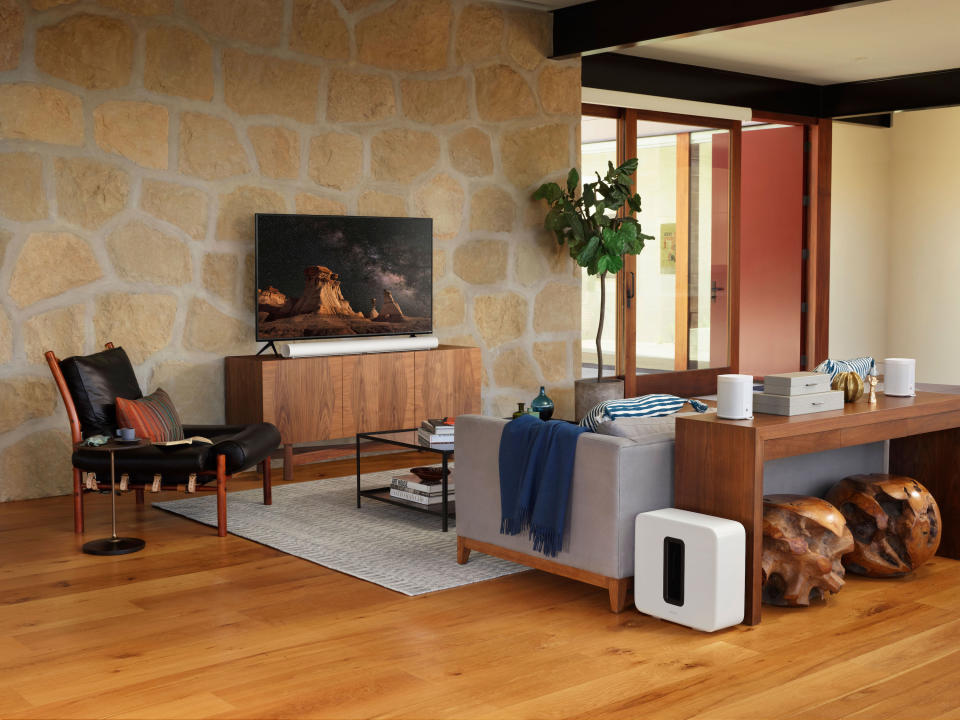The Sonos Arc is a smart soundbar with Dolby Atmos support
The Arc shows Sonos is getting more serious about home theater sound.
A lot has changed in the home theater world since Sonos first released the Playbar in 2013. TVs have gotten a lot bigger, and new audio formats like Dolby Atmos have made their way from movie theaters into the home. Sonos has also released other home theater speakers like the smaller, more affordable Beam and the rather curious Playbase, but the flagship Playbar has gone untouched. That won’t be the case for long: today, Sonos is announcing the Arc, a new high-end soundbar that supports Dolby Atmos and uses an adaptive tuning system to optimize whatever content you’re playing through the speaker.
At a high level, Arc is a 45-inch-wide soundbar, which makes it notably bigger than the 35-inch Playbar. Sonos went with this size because most consumers are buying bigger and bigger TVs these days, and the extra size gives the company room to pack the Arc with two more drivers than you’ll find inside the Playbar. All told, the Arc has dedicated center, left and right channels, along with surround left and right and two upwards-firing speakers for height.

Plenty of soundbars support Atmos at this point, but Sonos is doing something interesting with how the Arc responds to different audio formats. For example: if you’re watching a movie that doesn’t support Atmos, the Arc will adapt and use the upwards-firing speakers to improve bass performance. Similarly, if you’re running the Arc with the Sonos Sub, it’ll adjust accordingly and use its speakers to focus more on the mids and highs. If you’re using a pair of Sonos One speakers as your dedicated rear surround channels, the Arc’s surround drivers will be reassigned, as well.
This, of course, all happens without the user really knowing about it. Sonos built the Arc to optimize whatever input source you’re playing, regardless of what format it is in or how many speakers are in a particular set-up. Similarly, Sonos says that Arc doesn’t “throw out” extra audio information that it gets from a single. For example, it only has speakers for five-channel surround sound rather than seven -- but the extra details in a seven-channel mix are mixed down to work in five channels rather than being left out completely.
While Sonos says that it isn’t doing any virtualization, it’s clear the company is making major audio adjustments to fit whatever space the Arc is placed in. That’s not unusual, though -- the company has offered its TruePlay tool for optimizing audio quality based on where a speaker is placed for years now, and the Arc works with TruePlay as well. Another example of the Arc’s smarts is that it recognizes when it’s mounted to the wall with its dedicated magnetic bracket and automatically compensates for increased bass reverberations.

Beyond the updated internals and Atmos support, Sonos also redesigned the exterior with a more rounded form factor and touch-sensitive controls on top. It’s a better match for the company’s more recent speakers than the Playbar, which definitely was showing its age from a design standpoint. As with some other recent Sonos speakers, the grille is a surprising design highlight. Sonos describes it as a single, 270-degree curved piece with more than 76,000 individual holes. What that should mean in use is that sound can escape in almost any direction based on what works best for your setup. The curved, one-piece design also just looks much more modern than the Playbar, and there’s just something captivating about that endless line of precision-drilled holes.
Beyond the Arc’s Atmos support and adaptive audio tricks, it has all the things you’d expect from a modern Sonos speaker. It includes HDMI eARC for keeping your audio in sync with whatever you’re watching on your TV, and it also has old-school optical audio input as well. Like other Sonos speakers, the Arc can stream music and other audio from dozens of services and work as part of a multi-room speaker setup. It supports voice commands from Alexa or Google Assistant, and you can send music to it via AirPlay 2 from iOS devices or a Mac. And like other Sonos home theater products, you can use speakers like the Sonos One as rear surrounds or hook up the wireless Sonos Sub, which has just been refreshed as well.

Unsurprisingly, these updates come at a cost: The Arc will cost $799 when it goes on sale June 10th. (It’s up for presale today and replaces both the Playbar and the Playbase.) That’s $100 more than the Playbar’s price, though it sounds like you’re going to get a lot more out of the Arc. And Sonos still has a more affordable living room speaker, the versatile and excellent-sounding Beam. It’s not nearly as advanced as the Arc, but it’s clearly a more approachable device at $399.
There are also plenty of cheaper soundbars if you want to get a Dolby Atmos home theater setup. But Sonos has a good track record of making excellent-sounding speakers, and that’s before taking into account the relative ease of setting up a wireless surround system or its vast music-streaming capabilities. As with any new speaker, we’ll need to hear this one for ourselves before passing any judgement. But at the very least, the Arc brings Sonos’ flagship home theater speaker up to modern standards.
